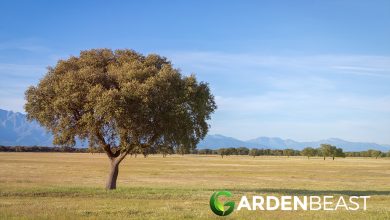Cabbages: [Planting, Irrigation, Care] – Complete Guide
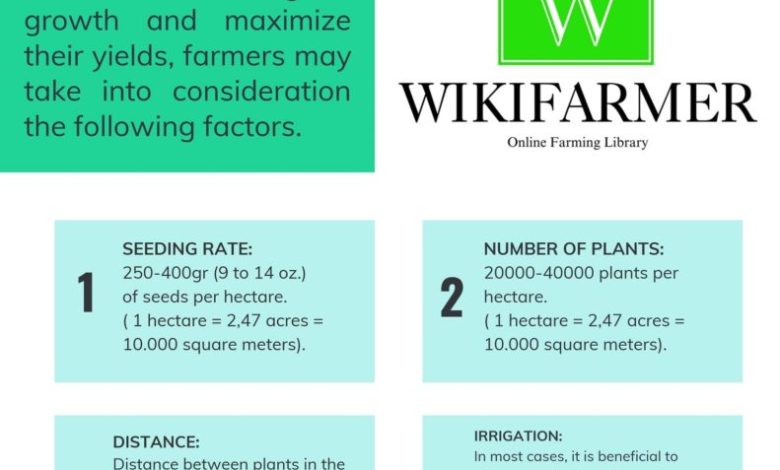
What are cabbages?
They are herbaceous plants belonging to the cruciferous or brassicaceae family, specifically of the Brassica genus, characterized by presenting an edible inflorescence commonly known as a bud, which is usually consumed before reaching the stage of maturity.
According to the characteristics of the bud, we can find within this group of plants, varieties whose edible part is the leaves (cabbage, cabbage and oriental mustard); in others, be the flowers (broccoli and cauliflower); and finally, some are small shoots of stems as in the case of Brussels sprouts.
Without a doubt, cabbages, like most vegetables, are made up mainly of water, which represents more than 90% of the plant.
Therefore, they contain low caloric value, a large amount of fiber and nutritional components such as calcium, potassium, vitamin C, mucilage, minerals and sulfur compounds, the latter responsible for a peculiar smell when cooked.
types of cabbage
Ruiz (2016) explains that there are two large groups in the brassicaceae or cabbage family; those that belong to the Brassica oleracea variety, and those that are located within the Brassica rapa.
The former are widely known in Europe, while the latter come from the Asian continent, however, they have achieved a certain popularity in Western orchards.
In this sense, we find within the group of Brassica oleracea, the following types of cabbages:
Broccoli
(Brassica oleracea var. italica) It is a plant with abundant green edible flower heads, distributed on a thick stem and that thrives in cool climates.
It can be eaten raw or steamed, but either way it is high in vitamin C, vitamin E, and glucosinolates (compounds that protect against stress and cancer).
Here to learn how to plant Broccoli
Brussels sprouts
(Brassica oleracea var. gemmifera) They are shoots that appear on the stem of the plant and are harvested when they present an intense green color (depending on the species they can be red or purple).
It is a winter crop with a slightly sweet and bitter taste. The edible part of the plant is usually rich in Complex B, Beta carotene, folic acid, calcium, potassium and various minerals.
Cabbage
 (Brassica oleracea var. capitata) It is a biennial herbaceous plant, whose pale green leaves (curly or smooth) form a closed and compact bud. It is a cabbage rich in vitamins A and C.
(Brassica oleracea var. capitata) It is a biennial herbaceous plant, whose pale green leaves (curly or smooth) form a closed and compact bud. It is a cabbage rich in vitamins A and C.
Here to learn how to plant Cabbage
Red cabbage or purple cabbage
(Brassica oleracea var. capitata f. rubra) It is a plant of the cabbage family that has purple leaves, due to the presence of a pigment called anthocyanin that is formed by the acid pH of the soil used for cultivation.
It is low in calories and contains proteins, potassium, sodium, phosphorous, calcium, iron and vitamins A and C. It is used both for culinary purposes and for chemical research as a pH indicator.
Cauliflower
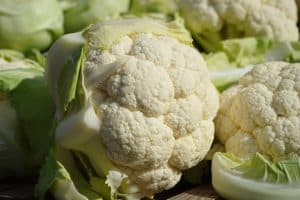 (Brassica oleracea var. botrytis) It is a plant composed of a white head that can weigh up to 2 kg (edible part) surrounded by green leaves.
(Brassica oleracea var. botrytis) It is a plant composed of a white head that can weigh up to 2 kg (edible part) surrounded by green leaves.
It has a mild, slightly sweet flavor and is an important source of dietary fiber, vitamin B6, vitamin B5, folic acid, and minerals.
Here to learn how to plant cauliflowers
Romanesque
(Hybrid of broccoli and cauliflower) It is a plant with striking characteristics, due to the large number of edible inflorescences that make it up. It is a cabbage rich in vitamin C, soluble fibers and carotenoids.
Kale or Kale
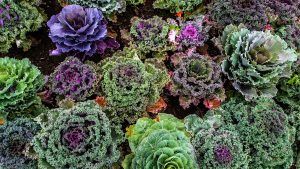 Kale or kale is a vegetable with green or purple leaves. Also called borreliosis. It is in the group of vegetables called Brassica oleracea or wild cabbage. It is cruciferous because of the shape of its flowers.
Kale or kale is a vegetable with green or purple leaves. Also called borreliosis. It is in the group of vegetables called Brassica oleracea or wild cabbage. It is cruciferous because of the shape of its flowers.
The kale began to be cultivated for the first time in the Mediterranean area, it was called cabbage long before the rounded variety existed.
Kale was an important crop in Roman times; it became a staple food for peasants in the Middle Ages and was brought to the United States by the English in the 17th century.
Here to learn how to plant kales
collard greens
(Brassica oleracea var. viridis) It is a plant cultivated for its large, green and fleshy leaves that, in addition to being edible for man, are also often used to feed livestock or for ornamental purposes, the latter mainly in Spain.
It contains a high degree of fibers, vitamins C and calcium.
kale green
(Brassica oleracea var. saberlica or acephala) It is a plant that requires a cold climate. Its leaves, as its name indicates, are curly, and its use tends to intensify at Christmas time, especially in northern Europe.
Savoy cabbage or Milanese cabbage
(Brassica oleracea var. sabauda) It is a plant characterized by a set of dark green leaves that lighten as they penetrate the heart of the plant. Its culinary use is popular in Holland, Italy and Germany.
Cabbage radish or kohlrabi
(Brassica oleracea var. gongylodes) It is a hybrid between magnesium cabbage.
Here to learn how to plant radishes
For its part, regarding the Brassica rapa group, we find:
Chinese cabbage or Chinese cabbage
(Brassica rapa subsp. pekinensis) Asian plant similar to Swiss chard, whose siliques end in a short beak. They are high in vitamin A and C.
Turnip
(Brassica rapa subsp. rapa) It is a plant that is characterized by being practically edible in its entirety (leaves, roots, stem). Its flavor is slightly spicy and bitter.
Here to learn how to plant turnips

pak choy
(Brassica rapa subsp. chinensis) Plants with smooth, dark green leaves that form clumps similar to celery. It is rich in vitamin K and B6.
Mizuna
(Brassica rapa subsp. nipposinica) Plants with long, shiny, green leaves, very popular in Japan for their slightly spicy flavor.
Komatsuna
(Brassica rapa var. perviridis) Known as Japanese spinach, it is used in Asia to season soups and is a great source of calcium.
grelo
It is a kind of turnip at the end of which edible flowers usually appear and it is rich in vitamin K. (Brassica rapa var. rapifera)
Tatsoi
(Brassica rapa subsp. narinosa) It is a plant that can be cultivated even under the snow due to its great resistance to cold. It has large dark green leaves with a creamy texture.
oriental mustards
(Brassica juncea) Plants whose leaves, seeds and stems are edible. Used in Italian, Indian, Chinese, African and Korean cuisine.
How to plant cabbage
The methodology for cultivation is usually similar for all types of cabbage, as long as the specific sowing times for each variety (winter , spring and summer species) are respected, since temperature is an important factor for both germination and germination. for the development of plants.
In this sense, cabbages are vegetables that reproduce by seeds, so it is recommended to make a seedbed, using pots of 6 to 10 cm maximum, and when the plants reach 13 cm in height.
We will transplant to a previously prepared orchard, leaving a distance between plant and plant of at least 30 cm, and between planting lines of 60 cm.
In this way, the first harvest can be carried out 3 to 5 months after planting.
It is important to remember that although most cabbages are cool weather, during the time they remain in the nursery, they are sensitive to low temperatures.
Additionally, these plants demand alkaline soils, well fertilized and nitrogenous (El Huerto de Urbano, 2017).
How do we water cabbages?
For cabbage, any irrigation system can be used, as long as soil moisture is guaranteed, even being necessary for varieties grown in autumn and winter.
We recommend drip irrigation, because it keeps the soil moist but without flooding.
Without a doubt, they are plants that require plenty of water, especially when they have just been transplanted.
For its part, the frequency of irrigation will depend on the phase in which the plant is.
For example, during germination and the first weeks after planting, they must be watered several times a week, while for the rest of the year only weekly watering is necessary.
Main pests and diseases of cabbage
According to Clemente Viven (2017), the main pests are:
- The Cabbage Fly (Chorthophilla brassicae Bouche), is an agent that affects the interior of the plant stem by sucking the sap from it. The most effective way to avoid it is prevention, applying granulated disinfectants.
- Leaf miner (Liriomyza trifolii Burg.), is a dangerous pest that attacks leaves, carving small galleries in them. For its treatment, the use of pesticides is necessary.
- Cabbage flea (Phyllotreta nemorum L.), is an agent that nibbles the leaves and roots of the plant. For its elimination, they usually recommend active ingredients such as acephate.
- Cabbage aphid (Brevicoryne brassicae L.), is a bluish-white aphidthat bites the leaves of the plant and can cause damage to human health because it is a virus transmitter.
- Various insects, such asthe cabbage caterpillar (Pieris brassicae L.), affect both the leaves and the flowers of the plant.
As for diseases, the most common are usually:
- Alternaria (Alternaria brassicae), is a disease that produces black spots one centimeter in diameter on the leaves.
- Hernia of the cabbage (Plasmodiophora brassicae Wor.), attacks the roots with large protuberances, which prevents the plant from developing and withering.
- Mildiu (Peronospora brassicae), produces yellow spots on the upper part of the plant and a kind of gray fluff.
- Rhizoctonia (Rhizoctonia solani Kühn), produces deformations in the root and neck of the stem that can cause the definitive death of the plant.
- Rust (Albugo candida), attacks different areas of the plant forming white pustules.
verticillium wilt
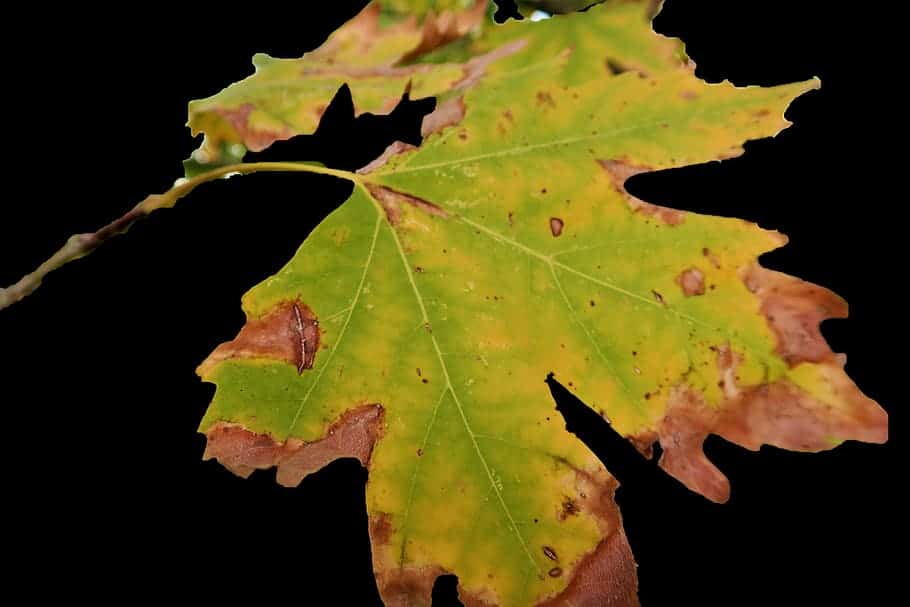 Verticillium or Verticillium wilt is a common soil fungus that thrives in temperate climates around the world and can be present in the soil for decades.
Verticillium or Verticillium wilt is a common soil fungus that thrives in temperate climates around the world and can be present in the soil for decades.
Verticillium wilt overwinters in the soil as dormant mycelium or tiny dormant black structures called microsclerotia, waiting for favorable conditions to return.
They enter damaged plant tissue through the roots and multiply. Many common weeds, such as dandelions and weeds, can be Verticillium host species.
Verticillium wilt is a disease that affects more than 350 species of eudicolous plants. It is caused by six species of Verticillium fungi: Verticillium dahliae, Verticillium albo-atrum, Verticillium longisporum, Verticillium nubilum, Verticillium theobromae, and Verticillium tricorpus.
Many plants with significant economic weight are susceptible, such as cotton, tomatoes, potatoes, oilseed rape, aubergines, peppers, and ornamental plants, as well as others in natural vegetation communities.
Many species and cultivars of eudicots are resistant to the disease, and all monocots, gymnosperms, and ferns are immune. To know more: Verticillium wilt in the Orchard: What is it? How do we identify it?
history of cabbage
According to Edysma (2017), the presence of cabbage (Brassica oleracea) dates back to the 6th century BC, being considered a sacred element by the Greeks and reserved for the most powerful Romans of the time, who consumed it before banquets to better absorb alcohol and to treat some intestinal diseases.
For its part, in Spain, it is believed that the Arabs introduced it from Syria around the 12th century.
The truth is that from the encounter with America, travelers began to demand the consumption of large amounts of vitamins and minerals to withstand long periods of travel, so they were included among the food supplies, thus reaching the American continent.
Cabbage began to be sold in the French and English markets in the year 1600 and from England it spread to India around the year 1800, beginning its popularity throughout Europe, being cultivated especially in the center and north of the continent.
However, it was not until the last century that its properties to treat diseases such as colds, laryngitis, pleurisy and rheumatism were known and verified; this knowledge that aroused interest in the genetic improvement of cabbage in all its presentations.

![Photo of Polar Climate: [Characteristics, Flora, Fauna and Adaptability]](https://www.complete-gardening.com/wp-content/uploads/2022/08/polar-climate-characteristics-flora-fauna-and-adaptability.jpg)

![Photo of What Care Does Bamboo Have?: [Composting and Pruning]](https://www.complete-gardening.com/wp-content/uploads/2022/08/what-care-does-bamboo-have-composting-and-pruning-390x220.jpg)
